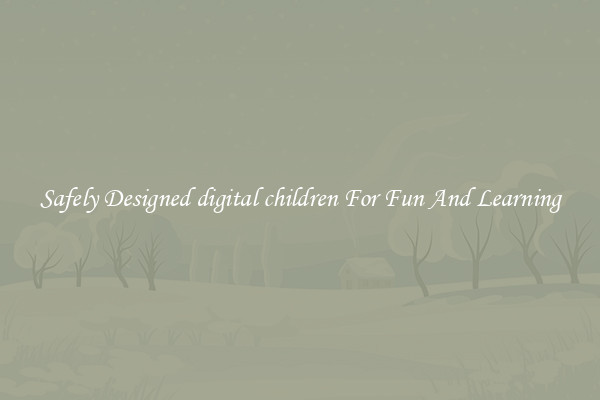Safely Designed digital children For Fun And Learning
Safely Designed Digital Children for Fun and Learning

In today's fast-paced digital world, children are exposed to technology at an early age. While some may view this as a negative aspect, it is important to recognize the potential benefits that digital platforms can offer to children's education and development. However, ensuring that these digital experiences are safe and carefully designed for children is paramount.
One of the key aspects of designing digital content for children is to prioritize their safety. This involves implementing strict privacy measures and safeguarding children from any form of harmful content. Developers should adhere to guidelines and regulations to protect children's personal information and ensure their online experiences are age-appropriate.
Additionally, it is important to strike a balance between fun and educational content. Digital platforms should provide a range of engaging activities that not only captivate children's attention but also offer educational value. By incorporating elements of gamification and interactive learning, children can have fun while acquiring essential skills and knowledge.
Designing digital products and platforms should also consider the developmental stages of children. Content should be tailored to specific age groups, taking into account their cognitive abilities and interests. For instance, younger children may benefit from more visual and interactive experiences, while older children may require more complex challenges to keep them engaged. By understanding children's varying developmental needs, digital experiences can be designed to cater to their specific requirements.
Another important aspect is providing a safe space for children to explore, learn, and interact. Digital platforms should foster a supportive and collaborative environment, where children can communicate with their peers, work on projects together, and share their achievements. This encourages social interaction and enhances children's teamwork and communication skills.
Furthermore, incorporating parental controls can play a significant role in ensuring a safe and regulated digital experience for children. Parents should be able to monitor and control their child's online activities, allowing them to set time limits, restrict access to certain content, and supervise their child's interactions. This empowers parents to protect their children while allowing them to explore and learn in a controlled manner.
In conclusion, designing digital platforms for children requires a careful balance of fun and educational content while prioritizing their safety. By adhering to strict privacy measures, tailoring content to age groups, encouraging social interaction, and incorporating parental controls, children can have a positive digital experience that contributes to their overall growth and development. With these considerations in mind, digital platforms can provide a safe and engaging space for children to learn and have fun.

View details

View details

View details

View details








